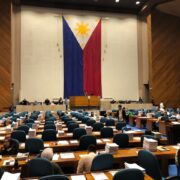A swanky hotel or a people’s museum?

One of the most iconic heritage buildings of our country is waiting to be transformed into a legacy project of the Marcos administration. The edifice is the imposingly magnificent Manila Central Post Office (MCPO) building, which turns 100 years old next year. Aside from Malacañan Palace, it’s the only other heritage building I know that is nestled right on the banks of the storied Pasig River.
The MCPO is situated right across the historic Binondo district and has as its front open space the renowned Liwasang Bonifacio. Because of its waterfront access, it will naturally be an important pit stop for promenaders strolling along the Pasig River Esplanade.
The river esplanade is a commendable legacy project of the Marcos administration, spearheaded by First Lady Liza Marcos. It consists of riverbank development with features such as walkways, bike lanes, viewing decks, bridges, and commercial spaces along the banks of the river. So far, 1,880 meters of the esplanade have been completed, but the plan is to continue the development for a 25-kilometer stretch of the river. With its access to the Pasig riverbank, and if it is rightfully transformed into a venue that showcases our nation’s cultural heritage, the MCPO will easily become a highlight of the esplanade experience.
The MCPO is currently undergoing rehabilitation after it was gutted by a big fire in 2023. Once the building is restored, it must not go back to its original use as a post office, as it will be a disservice to its stature as a heritage building. Postal service has become a near-extinct government service, and to continue using the MCPO building as a warehouse for mail matters demeans its exalted status as an “important cultural property” as declared by the National Museum of the Philippines in 2018. When a building is declared an ICP, it means that it is a structure with “exceptional cultural, artistic, and historical significance to the Philippines.”
The only way to do justice to the stature of the MCPO as an eminent cultural heritage site is to transform it into a National Museum of Contemporary Art. It should be utilized to present our people’s artistic outputs that constitute the creative pride of our race.
Currently, we have three heritage buildings that have been superbly transformed into edifices showcasing our artistic treasures, mementoes of our history, and the rich flora and fauna of our islands. First, the former Legislative building, which has become the National Museum of Fine Arts; the former Department of Finance building, which has been converted into the National Museum of Anthropology; and the former Department of Agriculture and Commerce building, which now houses the National Museum of Natural History. Kudos to the National Museum for its excellent efforts in converting this triumvirate of historic buildings into world-class museums.
Two weekends ago, I revisited the National Museum of Fine Arts and the National Museum of Anthropology, and I was awestruck at the throng of students and ordinary people excitedly viewing the arts and artifacts that define us as a people. Credit should be given to the Duterte administration for opening these museums to the public for free, liberating these cultural venues from being the haughty enclaves of the perfumed crowd.
The National Museum of Fine Arts presents the cream of our country’s artistic output, but it only exhibits artworks created up to the early 1980s, except for a few. There has been almost half a century of outstanding art produced by several generations of exceptional artists since then. A new art museum showcasing our country’s contemporary art should be put up, and the MCPO is the perfect venue for that.
A few years ago, there was talk that the MCPO was being considered for long-term lease as a private five-star hotel. Lately, there has been chatter of a similar plan again. It would be culturally disastrous and would constitute a betrayal of the greater interest of the masses if a cultural icon like the MCPO were transformed into a party place for the uber-rich.
The privileges of the rich are already heavily subsidized by public funds. The never-ending maintenance of roads that cater overwhelmingly to the private vehicles of the moneyed class is just one example. With Liwasang Bonifacio, a favorite venue for people’s rallies, and the river esplanade, a future-favored promenade of the masses, the MCPO, as swanky sleeping quarters and a watering hole for the ultra-rich, can become a hated symbol of the oligarchy. Imagine the jarring visuals: the super-rich are partying inside the MCPO while the poor masses are rallying at the adjacent Liwasang Bonifacio. The call of the times is to make the people feel that they matter to their government. The ruling administration should not allow a retrogression of its cultural legacy.
The Marcos administration is already on the right track with two legacy projects—the Pasig River Esplanade and the planned conversion of the Intramuros Golf Course into a public park and forest. It should follow through with these commendable initiatives by repurposing the MCPO building into a museum for the people.
Build the museums, and the people will come.
Comments to fleamarketofideas@gmail.com


















